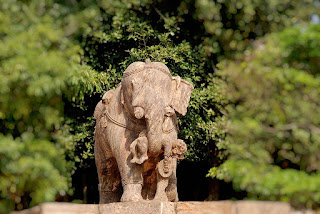Konark Sun Temple
Reliefs and sculpture
The walls of the temple from the temple's base through the crowning elements are ornamented with reliefs, many finished to jewelry-quality miniature details. The terraces contain stone statues of male and female musicians holding various musical instruments. Other major works of art include sculptures of Hindu deities, apsaras and images from the daily life and culture of the people (artha and dharma scenes), various animals, aquatic creatures, birds, mythological creatures, and friezes narrating the Hindu texts. The carvings include purely decorative geometric patterns and plant motifs. Some panels show images from the life of the king such as one showing him receiving counsel from a guru, where the artists symbolically portrayed the king as much smaller than the guru, with the king's sword resting on the ground next to him.












Comments
Post a Comment